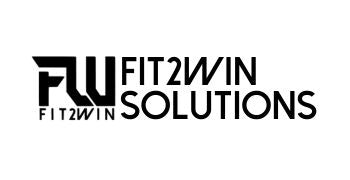
How to Set Realistic Fitness Goals for Long-Term Success
Share
Setting fitness goals is an exciting step toward improving your health and well-being. However, one of the biggest mistakes people make is setting goals that are too ambitious or vague, which can lead to frustration and burnout. The key to success? Setting realistic, actionable goals you can sustain over time. Here’s how to do it:
1. Start with Your Why
Before setting specific goals, take a moment to reflect on why you want to improve your fitness. Ask yourself:
- Are you looking to increase energy levels?
- Do you want to lose weight or build strength?
- Are you preparing for an event, like a race or competition?
- How will it make you feel when achieve your goal?
- What will it cost you, if you don’t achieve it?
Understanding your deeper motivation will help you stay focused and committed, especially when challenges arise.
2. Make Your Goals SMART
A proven framework for goal-setting is the SMART method:
- Specific: Clearly define what you want to achieve. For example, instead of saying “I want to get fit,” say “I want to run a 5K in under 30 minutes.”
- Measurable: Include a way to track progress. For instance, track your resistance (weight), reps, or time.
- Achievable: Set goals that are challenging but realistic. For example, losing 1 pound per week is achievable; losing 10 pounds in a week is not.
- Relevant: Align your goals with your lifestyle and long-term aspirations.
- Time-Bound: Set a deadline, like “I’ll complete this goal in 8 weeks.”
3. Break Big Goals into Smaller Steps
Big goals can feel overwhelming, so it’s important to break them into smaller, actionable steps. For example:
- Big Goal: Lose 20 pounds in 5 months.
- Smaller Steps:
- Drink more water daily.
- Add 2 strength-training sessions per week.
- Meal prep healthy lunches every Sunday.
Each small step creates momentum, making your big goal feel more manageable.
4. Be Honest About Your Starting Point
It’s important to assess where you are now so you can set realistic expectations. Consider:
- Your current fitness level.
- Your schedule and time availability.
- Any physical limitations or health concerns.
Starting from a place of honesty allows you to build a plan that works for you.
5. Track Your Progress
Keeping track of your efforts helps you stay accountable and motivated. Use tools like:
- A fitness journal or app.
- Progress photos.
- Weekly body composition measurements and/or weight check-ins.
Remember, progress isn’t always linear. Celebrate small victories and use setbacks as learning opportunities.
6. Prioritize Consistency Over Perfection
One of the most important factors in achieving fitness goals is consistency. Life happens, and not every week will go perfectly—and that’s okay. Focus on building habits that you can maintain long-term, rather than striving for perfection.
7. Seek Support and Accountability
Having support can make a huge difference in staying motivated. Consider:
- Working with a certified fitness trainer for personalized guidance.
- Joining a fitness community or online group.
- Asking a friend or family member to be your accountability partner.
8. Be Flexible and Adjust as Needed
As you progress, you may find that your goals need to be adjusted. That’s a good thing! Fitness is a journey, not a destination. If something isn’t working, adapt your plan to better suit your needs and lifestyle.
Example Goal-Setting Plan
Let’s put this into practice with an example:
- Big Goal: Run a 5K in 12 weeks.
- Step 1: Start with 3 weekly walk/run sessions for 30 minutes.
- Step 2: Gradually increase running time each week.
- Step 3: Join a local running group for support.
- Step 4: Register for a 5K race to stay motivated.
Setting realistic fitness goals is the foundation of long-term success. By starting with your why, using the SMART framework, and staying consistent, you’ll build habits that lead to meaningful, sustainable progress. Remember, every small step you take brings you closer to your ultimate goal.
Ready to take the first step? Download our free New Year Workbook to start setting and tracking your fitness goals today!